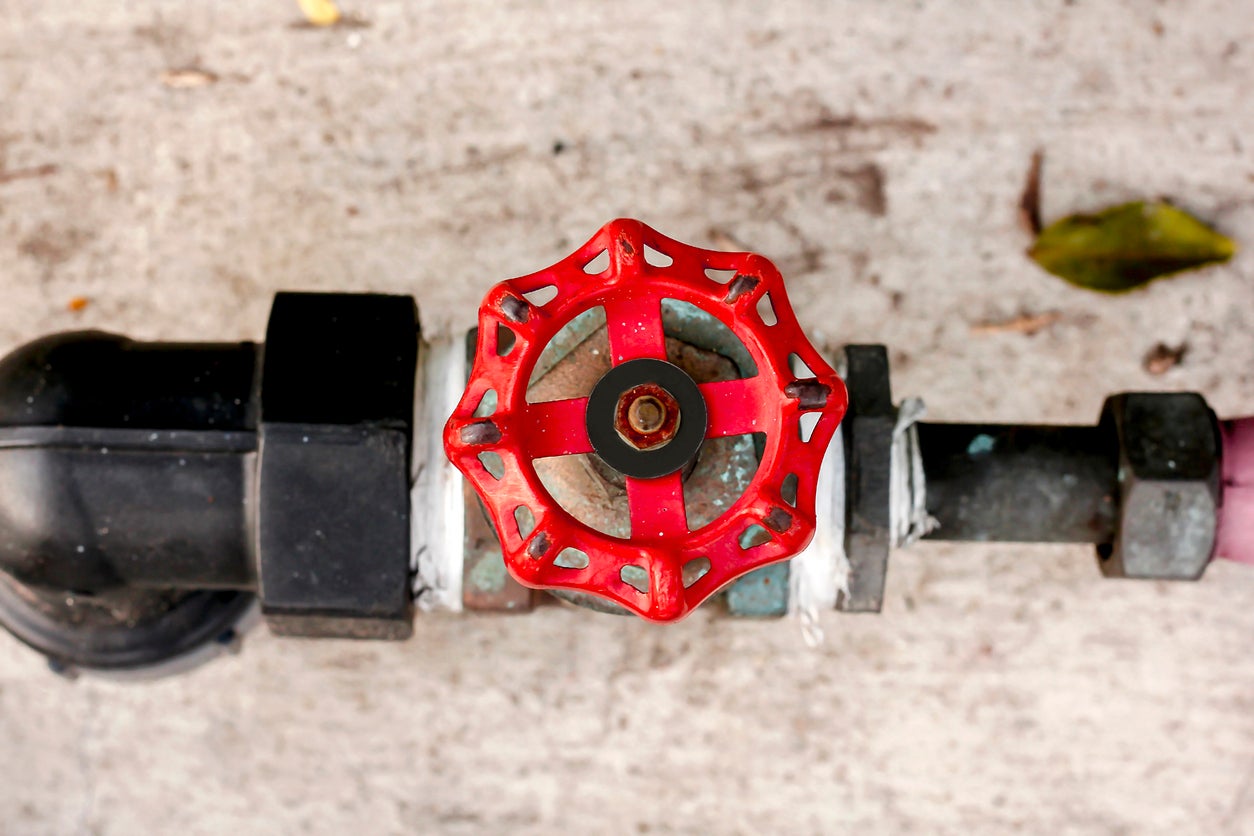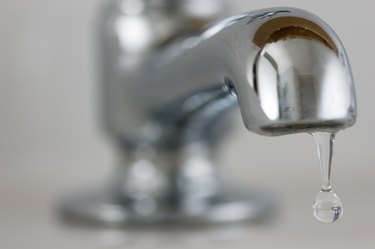The article author is making several good points relating to 9 Reasons for Low Water Pressure in Your House as a whole in the article in the next paragraphs.

Low water stress in your home can be an aggravating trouble, affecting every little thing from bathing to cleaning recipes. If you're experiencing weak water circulation, there are a number of feasible causes and options to check out. In this guide, we'll review usual reasons for low water pressure and useful steps to resolve the concern properly.
Introduction to Low Water Pressure
Low water pressure happens when the flow of water from your faucets, showers, and various other fixtures is weak than typical. This can make everyday jobs extra difficult and much less efficient. Recognizing the root causes of low tide pressure is essential to locating the right option.
Usual Sources Of Low Tide Stress
Faulty Stress Regulatory Authorities
Pressure regulators are accountable for preserving regular water stress in your house. If they malfunction, it can lead to low tide stress or uneven circulation throughout your home.
Metropolitan Water Supply Issues
Occasionally, the problem exists outside your home. Municipal water supply problems, such as main line leakages or upkeep job, can momentarily lower water stress in your area.
Pipe Obstructions
In time, pipelines can come to be blocked with mineral deposits, debris, or debris, restricting the flow of water. This is an usual problem in older homes with galvanized steel pipes.
Deterioration
Corrosion within pipes can lead to leaks and minimized water pressure. Corrosion accumulation can constrict water circulation, particularly in maturing plumbing systems.
How to Detect Low Tide Stress
Inspecting Pipelines
Check noticeable pipelines for indications of leaks, corrosion, or blockages. Take notice of any kind of uncommon noises, such as knocking or rattling pipelines, which can show concerns within the plumbing system.
Consulting with a Plumber
If you're incapable to pinpoint the root cause of low water pressure, take into consideration working with a professional plumber to perform a detailed evaluation. They can determine underlying issues and suggest ideal services.
Checking Taps and Fixtures
Beginning by testing the water stress at various faucets and fixtures throughout your home. If the problem is isolated to details locations, it may indicate localized issues.
Do It Yourself Solutions to Repair Low Tide Pressure
Flushing Hot Water Heater
Debris buildup in the hot water heater can restrict circulation and reduce efficiency. Flushing the container occasionally helps get rid of debris and preserve optimal efficiency.
Inspecting Pressure Regulator
Guarantee that the pressure regulatory authority is working correctly. Readjusting or changing the regulatory authority can aid bring back proper water pressure throughout your home.
Cleaning Aerators and Showerheads
Natural resources can gather in aerators and showerheads, minimizing water flow. Eliminate and cleanse these parts on a regular basis to improve water pressure.
Clearing Up Clogs in Water Lines
For minor obstructions, attempt making use of a plumbing serpent or chemical drainpipe cleaner to clear obstructions in pipelines. Beware when using chemicals and comply with safety and security guidelines.
When to Call a Professional Plumber
If DIY initiatives stop working to solve the problem or if you suspect considerable plumbing problems, it's best to seek aid from an accredited plumber. They have the competence and devices to attend to complicated concerns securely and properly.
Safety Nets to Maintain Water Pressure
Installing a Pressure Booster
Think about installing a pressure booster pump to enhance water pressure in areas with continually reduced circulation. This can be especially beneficial for multi-story homes or residential properties with high-demand fixtures.
Surveillance Water Use
Bear in mind water usage habits and prevent overtaxing the plumbing system. Simple adjustments, such as staggering showers and washing lots, can help maintain ample water pressure.
Routine Maintenance
Set up regular maintenance for your plumbing system to avoid issues such as rust, leaks, and blockages. Resolving small problems early can help prevent even more considerable repair work in the future.
Final thought
Dealing with low water stress can be irritating, but determining the underlying causes and executing suitable options can recover ideal flow throughout your home. Whether it's cleaning up aerators, examining pipelines, or consulting with a plumber, taking positive actions can ensure a constant supply of water for your daily demands.
9 Solutions to Low Water Pressure
If you have ever struggled to rinse the shampoo out of your hair, washed your hands under a trickle of water, or been forced to wait for your washing machine to complete a cycle, then you have experienced the nuisance of low water pressure. Low water pressure can turn a simple task into a hassle, but once you identify the cause, either the necessary plumbing fix or a water booster pump can drastically improve your water pressure. In this article, you can learn about nine common causes of low water pressure and how to resolve low water pressure in your home.
How do you know if you have low water pressure?
Testing your home’s water with a pressure gauge is the easiest way to find out if you have low water pressure. Pressure gauges are simple and inexpensive, and once installed, will allow you to check your water pressure with a quick glance.
If your water is from a municipal water supply, select an outdoor faucet near where the main water line enters your home. If your water is from a well, select a faucet that is close to the well’s pressure tank. Attach the pressure gauge to the faucet and tighten it. To get an accurate reading, make sure water isn’t being used anywhere else inside or outside the house, and then fully turn the faucet on. Once the faucet is on, you can read the water pressure on the gauge’s dial. Typical home water pressure should be between 40 and 50 psi, so if the dial reads less than 40 psi, you have low water pressure.
Do water booster pumps increase water pressure?
A water booster pump is a centrifugal pump that improves low water pressure and increases water flow. Much like how a fan’s blades create a gust of air, a water booster pump’s rotating impeller draws water in and then pushes it out with increased force. This force raises the water pressure in a system. A water booster pump is installed where the main water line enters your home, so water pressure is improved in every tap and appliance.
What causes low water pressure?
1. Hard water
If you have hard water, scale can accumulate in your pipes, restrict the water flow, and reduce your water pressure. Hard water has a high mineral content, specifically calcium and magnesium, and scale is formed when these mineral salts dissolve.
The solution: When scale buildup is severe enough to restrict water flow and reduce water pressure, the best solution is to replace your pipes. Products like CLR Calcium, Lime, and Rust remover can diminish scale, but as the scale comes off it may clog your pipes, creating another costly plumbing problem. Not to mention, it is never a good idea to put harsh chemicals in the pipes that supply your drinking water. To prevent scale in the future, we recommend installing a water softener.
The main water shut off valve is not open.
If your water pressure has suddenly decreased and you recently had a repair done, make sure the main water shut off valve is fully open. Most plumbing repairs require the water to be shut off, but if the valve is not completely opened afterward, your water pressure will be restricted.
The solution: Locate your main shut off valve, which is installed where the main water line enters your home, and fully open it by turning it counterclockwise.
A municipal water problem
Low water pressure may not have to do with your own plumbing system. Just like your home’s water supply, the municipal water supply is subject to problems that can cause low water pressure, such as leaks and corrosion.
The solution: Call the municipal water supply to report your low water pressure. Your input may alert them to the problem and will ensure your water pressure is restored as quickly as possible.
Faulty pressure regulator
A pressure regulator is a valve that reduces incoming water pressure as water flows into your home from the main service line. High water pressure can damage pipes and plumbing fixtures, so a pressure regulator is installed to protect your home plumbing system. Most are set to 50 pounds per square inch (psi), but if yours is set lower, your water pressure will feel low. If your pressure regulator is set to 50 psi but your pressure still feels low, it may be broken or clogged.
The solution: Adjust your pressure regulator’s setting to 50 psi if it is currently set lower. If your pressure regulator is faulty, ask a plumber to replace it.
A leak
A leak can reduce water flow and water pressure. To determine if you have a leak, turn all the faucets off inside and outside of your home. About an hour later, check your water meter. If it indicates you are using water, you have a leak.
The solution: Enlist the help of a licensed plumber to locate and repair the leak. Once the repairs are complete, your water pressure should return to normal.
https://www.freshwatersystems.com/blogs/blog/what-causes-low-water-pressure-and-how-to-improve-it

Do you like reading about 9 Reasons for Low Water Pressure in Your House? Create a remark down the page. We would be glad to see your opinions about this entry. We hope that you visit us again later on. Those who enjoyed our blog entry please remember to pass it around. Kudos for your time. Revisit us soon.
Website